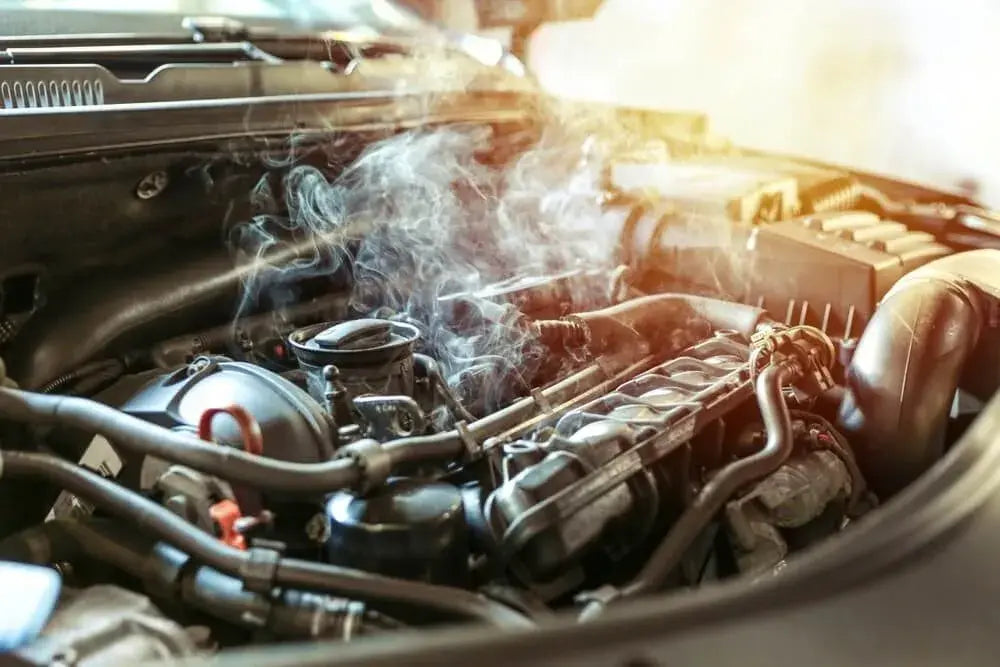
دليل شامل لصيانة نظام التبريد وتعبئة الردياتير في السيارة
من الضروري الحفاظ على نظام تبريد السيارة في حالة ممتازة لتجنّب ارتفاع حرارة المحرك والتلف المكلف. إليك دليل خطوة بخطوة لفحص وتعبئة مياه التبريد (Coolant) بطريقة آمنة وفعالة.
أولًا: السلامة أولاً – لا تبدأ قبل تبريد المحرك
-
دع المحرك يبرد تمامًا: لا تفتح غطاء الردياتير أبدًا والمحرك ساخن، لأن بخار أو سائل التبريد الساخن قد يندفع بقوة ويسبب حروقًا خطيرة.
-
ارتدِ أدوات الحماية: يُنصح بارتداء قفازات ونظارات أمان لحماية نفسك من أي انسكابات أو رذاذ.
ثانيًا: تحديد مكان الردياتير وخزان التبريد
-
الردياتير: يوجد عادةً في مقدمة حجرة المحرك.
-
خزان التبريد (Reservoir): عبارة عن وعاء بلاستيكي شفاف متصل بالردياتير، وعادة ما يكون عليه ملصق "Coolant" أو "Engine Coolant".
ثالثًا: فحص مستوى سائل التبريد
-
في خزان التبريد: تحقق من المستوى من خلال العلامات الجانبية ("Low" و"Full"). إذا كان تحت الحد الأدنى، ستحتاج إلى تعبئته.
-
في الردياتير: إذا كان الخزان فارغًا تمامًا، انتظر حتى يبرد المحرك، ثم افتح غطاء الردياتير بحذر لتفقد مستوى السائل داخله.
رابعًا: تعبئة سائل التبريد
-
اختر النوع المناسب: استخدم سائل تبريد موصى به في كتيب السيارة. بعض السيارات تحتاج إلى أنواع خاصة مثل "Long Life Coolant" أو "Organic Acid Technology (OAT)".
-
التخفيف بالماء المقطر (إن لزم): إذا كان السائل مركزًا، قم بتخفيفه بنسبة 50/50 باستخدام ماء مقطر فقط.
-
املأ الخزان: اسكب السائل ببطء حتى يصل إلى علامة "Full".
-
املأ الردياتير (إذا لزم): إذا كان الردياتير منخفضًا، أضف السائل مباشرة داخله حتى الامتلاء.
خامسًا: إخراج الهواء من دورة التبريد (إن لزم)
-
فقاعات الهواء: بعض السيارات تحتاج إلى "تنفيس دورة التبريد" لتجنب وجود فقاعات هواء تعيق تدفق السائل.
-
الطريقة: قد يكون لديك صمام تنفيس، أو يمكن تشغيل المحرك وترك الغطاء مفتوحًا حتى تخرج الفقاعات.
-
الرجوع لكتيب السيارة: تأكد من التعليمات الخاصة بطراز سيارتك.
سادسًا: التأكد من عدم وجود تسريبات
-
تشغيل المحرك: بعد التعبئة، شغّل المحرك واتركه يعمل لبضع دقائق.
-
افحص أسفل السيارة: تأكد من عدم وجود تسريبات من الردياتير أو الخراطيم.
-
أعد فحص المستوى: بعد أن يبرد المحرك، افحص مستوى السائل مرة أخرى وأضف إذا لزم الأمر.
سابعًا: تأمين الأغطية
-
غطاء الخزان: تأكد من إغلاقه بإحكام.
-
غطاء الردياتير: يجب تركيبه بشكل آمن ومغلق بإحكام.
ثامنًا: الصيانة الدورية
-
فحص منتظم: تحقق من مستوى سائل التبريد مرة على الأقل كل أسبوعين، أو قبل الرحلات الطويلة.
-
تغيير السائل بالكامل: من الأفضل غسل نظام التبريد وتغيير السائل كل 50,000 - 100,000 كم، حسب توصية الشركة المُصنّعة للسيارة.
نصائح هامة عند التعامل مع مياه التبريد:
-
❌ لا تخلط أنواع مختلفة من سائل التبريد، قد تحدث تفاعلات كيميائية تقلل كفاءة التبريد وتضر بالمحرك.
-
✅ استخدم دائمًا ماءً مقطرًا عند تخفيف السائل، لتجنب ترسيبات الكالسيوم والمعادن.
-
♻️ تخلص من السائل المستخدم بطريقة صحيحة في مركز تدوير معتمد، ولا تسكبه في الصرف أو الأرض.
الخلاصة: حافظ على نظام التبريد... تحافظ على المحرك
الاهتمام بنظام التبريد لا يقل أهمية عن تغيير الزيت أو صيانة الفرامل. تأكد من استخدام سائل تبريد عالي الجودة من علامة موثوقة مثل ABRO لضمان أفضل حماية لمحرك سيارتك في الأجواء المصرية الحارة.
هل تبحث عن سائل تبريد موثوق ومصمم للمناخ المصري؟
✅ اكتشف مجموعة أبرو مصر من سوائل التبريد عالية الأداء، الجاهزة للاستخدام أو المركزة، لجميع أنواع السيارات.
